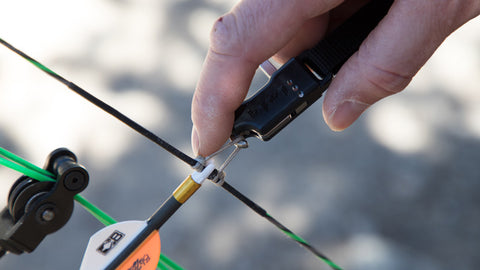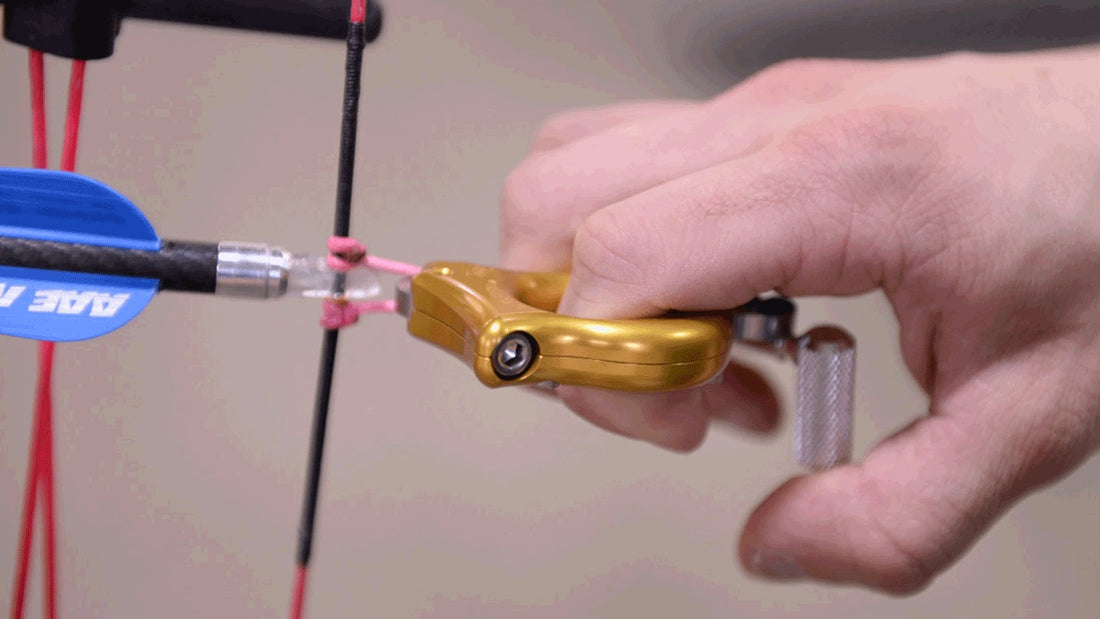Whether you have been shooting for years or just recently gotten involved with archery, you’ll find that nothing can improve your shooting the way a release aid can. Release aids can be handy in every shooting situation by decreasing string torque or removing it altogether, and that, overall, helps with improving your arrow’s flight.
A release aid is one of the most useful pieces in an archer’s kit. It helps simplify the release process and helps with preventing sloppy releases. Hence, choosing the right release aid that suits you and your shooting style can make life as an archer much easier.
To make the best choice, however, you need to understand the importance of release aids and the different release options available, including the features each provides.
What Are Release Aids, And Why Are They So Important?

Archery release aids are essentially mechanical devices that attach to the bow string to ease the process of pulling back and releasing the string by replacing the use of fingers. This significantly improves shot accuracy and precision by drastically reducing the impact of human error on the shot.
Consistently executing perfect shots in archery can be challenging. But using a release aid helps mitigate the risk of making errors at the most crucial moment of executing a shot. This archery accessory helps you consistently release the bowstring the same way each time you draw your bow.
We highly recommend that every archer utilizes some type of release aid as it’ll go a long way to not only improve your accuracy and consistency but also reduce fatigue in your hands and fingers.
Archery Release Aid Options
When thinking about choosing a release aid, the first step is to identify what type of shooting you usually do. Do you intend to shoot in competitions or go bowhunting? There are several types of release aids out there, and they all have different features that make them more ideal for certain shooting styles.
You will find that the types of release aid best for tournament shooting, target shooting, and bow hunting are all quite different. And while you can use the same release aid for all three, it will be beneficial for you to know what you are looking at.
Below, we’ll discuss the different types of release aids available on the market, their characteristic features, and their applications.
Index Finger Release Aids (Command Releases)

When looking at this release type, you will find that they can be triggered by the index finger and that the anchor will be under the cheek or chin bone. Index releases come in both the hand-held and wrist strap variants. Wrist-type index finger releases usually come attached to a padded strap (either a buckle or velcro strap) that wraps around your wrist and is activated by simply pulling a trigger - pretty similar to a gun.
It’s the most popular release type among bowhunters probably because it is most familiar to them as many hunters usually start hunting with a riffle where they simply pull or squeeze a trigger to activate the shot. A major upside to the index finger release is that it gives the archer complete control over the shot, allowing them to control the shot precisely - explaining why it’s also referred to as command release. The archer gets to command the trigger by pulling it as soon as the sight pin rests on the target.
With wrist releases, you will find that the weight and tension are being held by the wrist, allowing your hand and your fingers to stay completely relaxed to squeeze the trigger. The stress of drawing the bow will be held through the forearm and distributed down to the back, allowing you a more steady aim. Wrist strap releases make it easier to draw your bow and tend to be excellent for long distances. These are pretty popular with bow hunters due to the simplicity of their design and the power of the release.
A downside to this release, however, is its tendency to induce target panic - a phenomenon commonly referred to as “punching the trigger”. Target panic is a common issue among many archers and bowhunters and can result in really poor arrow groupings. The release in itself isn’t exactly the issue. Rather, our individual tendencies and how it’s used can become an issue. Releases designed to be activated using a trigger subconsciously make the archer want to fire the arrow as soon as the sight pin crosses the intended target. Over time, this could lead to shot anticipation and anxiety, which is bad news for the archer. A good way to fix this will be to rethink the release setup and how you use it.
Hand-Held Thumb Trigger Release Aids

Often referred to as the thumb button, it’s a release aid activated by pulling the trigger with your thumb. Handheld thumb releases also help archers anchor more easily and consistently. This could be particularly handy for archers with floating or inconsistent anchor points.
One of its key features is that when used correctly, the handheld thumb release was designed to remove the “flinch” factor associated with index finger releases but still retain the ability to release on command. By taking the punching factor out of each shot, thumb releases can help facilitate your shots and shrink your arrow groups significantly.
But you should note that while many professionals advise archers struggling with target panic to make a switch, it’s still possible you pick up a handheld thumb release and continue to punch the trigger on it too. Hence the importance of learning to shoot a thumb release correctly.
Also, being hand-held implies that this release style doesn’t usually come with a wrist strap. The upside to handheld releases is that you have the option of hanging them on your bow or storing them away in your pocket until it's time to take a shot. But what this also means is that it’s really easy to lose them. Just imagine how frustrating it will be to reach into your pocket right when you need to take a shot and realize your release is nowhere to be found. Hence, if you choose this release type, you have to keep track of it when you’re out shooting and ensure you always keep an extra handy.
Overall, thumb releases are an excellent choice for both target archery and bow hunting alike. However, if you decide to go for one, put in the time and effort to learn to use it properly so that issues with target panic don’t continue or develop.
Hinge/Back Tension Releases

The hinge release also referred to as the back tension release, is the release type many archers have come to find intimidating. But with enough tips and practice, you’ll come to find how basic and userfriendly it can actually be.
Designed to completely cut out the command factor in each shot, the back tension release helps the shooter focus on their aiming rather than releasing the shot. This allows the archer to develop a subconscious surprise release. The back tension release is essentially a handheld release that wasn’t built with a trigger and is activated by a slight backward rotation of the release. The rotation of the handle causes a searing mechanism to slip, opening the hook to fire the bow.
Back tension release is often recommended for experienced target archers as its unusual firing mechanism isn’t very forgiving in terms of technique. It’s also not the best choice for bowhunters as it takes longer to fire and won’t allow timing your shots.
The surprise release can be very useful for overcoming target panic, but as in the case of thumb trigger releases, they require that you invest time and effort into learning to use one properly. Back tension releases are also helpful in establishing a solid, consistent anchor point.
Mistakes To Avoid When Choosing A Release Aid

It’s not uncommon for archers to make bad choices when shopping for their archery gear. Below are some common bad choices archers make when choosing a release aid:
Overspending On The First Release
Many archers believe they have to invest a lot of money into purchasing their first release. But buying high-end releases isn’t exactly a good idea, particularly for beginner archers. This is because, at this point, you most likely do not know exactly what you want from your release and will most times switch within a year or two.
Switching Too Often Between Different Releases
It’s true that you’ll most likely need to try more than one release type before finally settling for the option that best suits you and your shooting style. You should, however, not overdo it. Bear in mind that adverts can be misleading, and switching would not necessarily improve your shooting accuracy. Instead, focus on improving your archery skills and only switch if you do not like your current release type.
Switching Too Quickly To A Back Tension Release
While you might have a number of good reasons to make the switch, you need to know it’s not exactly easy. In fact, many archers have reported watching their score drop dramatically the first couple of shots after making the switch and that it takes a while to get back to shooting at your old level. So, there really isn’t any reason to switch releases in a rush. Better still, stick with your current release aid until you’re really ready to start using a hinge release.
What Release Aid Is Best For You?
The index finger and thumb trigger releases are by far the most common release types. This is probably due to their ease of use, even for beginner archers, and you can decide exactly when to release your shot. Basically, they put you in control and give you time to steadily improve your shots. Back tension release aids are, however, more common among competition shooters and are recommended for archer struggling with target panic because it removes the “flinching” factor and allows for a surprise release.
Ultimately, most archers do not have inherent preferences for a particular archery release type and choose an option that best suits their situation, be it a back tension, thumb trigger or index finger release aid.
 cust@legendarchery.com
cust@legendarchery.com 302 503 5767
302 503 5767 Sauk Village IL 60411
Sauk Village IL 60411


